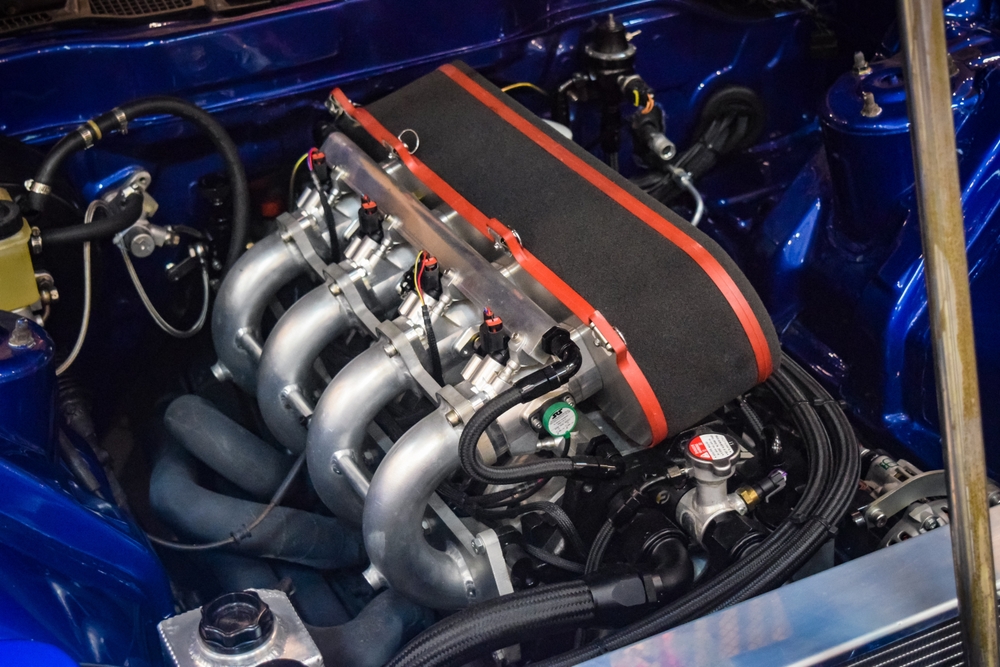Rotary Engines: The Unsung Heroes of Automotive Power
In the world of automotive engineering, one unconventional design has captured the hearts of enthusiasts and perplexed mechanics for decades: the rotary engine. This unique powerplant, with its spinning triangular rotor, defies the traditional piston-driven norm and offers a compelling alternative to conventional engine designs. But what makes the rotary engine so special, and why has it remained a niche player in the automotive landscape? Let's dive into the fascinating world of rotary power and explore its past, present, and potential future.

How Rotary Engines Work
At its core, a rotary engine operates on the same four-stroke principle as a piston engine: intake, compression, combustion, and exhaust. However, the way it achieves these stages is radically different. As the rotor spins, it creates three separate combustion chambers, each at a different stage of the cycle. This continuous motion results in exceptionally smooth power delivery and high revving capabilities.
Advantages That Set Rotaries Apart
Rotary engines offer several distinct advantages over their piston-driven counterparts. First and foremost is their simplicity. With far fewer moving parts than a traditional engine, rotaries are incredibly compact and lightweight. This characteristic makes them ideal for sports cars, where power-to-weight ratio is crucial. Additionally, the rotary’s ability to rev high and produce substantial power from a small displacement has made it a favorite among performance enthusiasts.
Challenges and Criticisms
Despite their advantages, rotary engines have faced significant challenges that have limited their widespread adoption. One of the primary issues is fuel efficiency. The unique shape of the combustion chamber in a rotary engine can lead to incomplete fuel burn, resulting in higher fuel consumption and increased emissions. Additionally, the seals at the tips of the rotor, known as apex seals, are subject to wear and can lead to reliability concerns if not properly maintained.
Mazda: The Rotary Champion
When discussing rotary engines, it’s impossible not to mention Mazda. The Japanese automaker has been the most prominent proponent of rotary technology, featuring it in numerous production cars over the years. The iconic Mazda RX-7 and RX-8 sports cars are perhaps the best-known rotary-powered vehicles, showcasing the engine’s potential for high performance and unique character. Mazda’s commitment to the rotary engine has been unwavering, even as other manufacturers abandoned the technology.
Racing Success and Technological Advancement
The rotary engine’s unique characteristics have led to significant success in motorsports. Its compact size and high power output made it particularly well-suited for endurance racing. In 1991, Mazda achieved a historic victory at the 24 Hours of Le Mans with its rotary-powered 787B, becoming the first Japanese manufacturer to win the prestigious race. This success demonstrated the rotary’s potential and pushed the boundaries of its development.
The Environmental Challenge
As environmental concerns have taken center stage in the automotive industry, the rotary engine has faced increasing scrutiny. Its inherent inefficiencies and higher emissions have made it challenging to meet modern regulatory standards. This has led to a decline in rotary-powered production vehicles, with Mazda discontinuing its last rotary model, the RX-8, in 2012. However, this setback hasn’t spelled the end for rotary technology.
A New Spin: The Rotary Range Extender
In recent years, there’s been renewed interest in rotary engines, not as primary powerplants, but as range extenders for electric vehicles. The rotary’s compact size and smooth operation make it an ideal candidate for this application. Mazda, ever the rotary champion, has announced plans to use a small rotary engine as a range extender in future electric vehicles. This innovative approach could breathe new life into rotary technology, adapting it for the electrified future of transportation.
The Future of Rotary Power
While the heyday of rotary-powered sports cars may have passed, the technology continues to evolve. Research into advanced materials and manufacturing techniques could address some of the rotary’s traditional weaknesses, such as apex seal wear and fuel efficiency. Furthermore, the potential for hydrogen-fueled rotary engines presents an intriguing possibility for clean, high-performance powerplants.
A Legacy of Innovation
The rotary engine stands as a testament to automotive innovation and the pursuit of alternative technologies. Its unique design and characteristics have earned it a devoted following and a special place in automotive history. While its future in conventional vehicles may be uncertain, the rotary engine’s legacy of pushing boundaries and challenging norms continues to inspire engineers and enthusiasts alike.
As the automotive landscape evolves, the rotary engine serves as a reminder that there’s always room for unconventional thinking and innovative approaches. Whether as a niche performance engine, a range extender for electric vehicles, or in some as-yet-undiscovered application, the spirit of the rotary engine – smooth, compact, and full of potential – is likely to spin on into the future of automotive technology.





